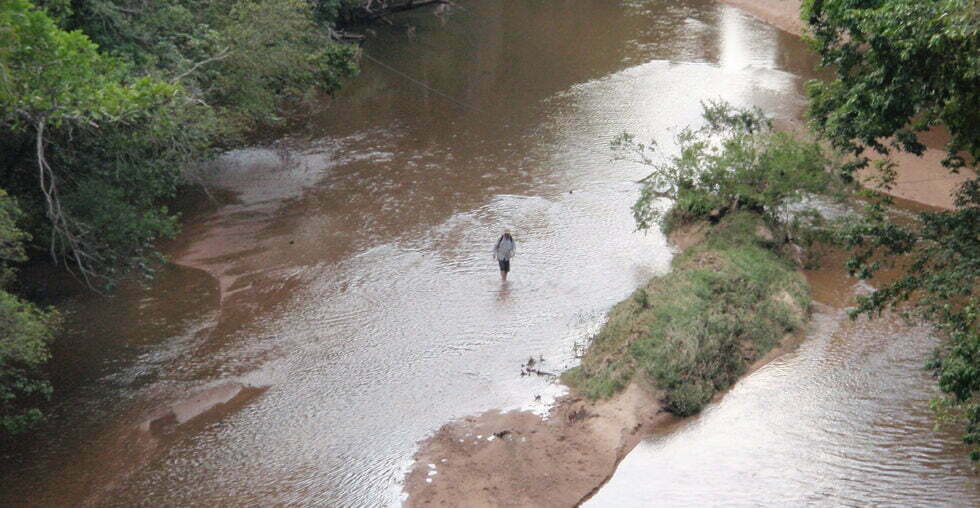This essay speaks for the significance of natural place, particularly riverine place, in human lives. Such places, it’s argued, are restorative; curers of weltschmerz; reinvigoraters of a human sense of proportion.
The place is elsewhere. Not urban. In fact, it’s mandatory that it be away from urban – essentially unpeopled. Fundamentally natural. One should be able to sense it deeply[1], (sense as recall), without being there. It has what the geographer Edward Relph[2] calls “a synaesthetic faculty which combines sight, hearing, smell, movement, touch, imagination, purpose and anticipation.” All of one’s senses and all of one’s mind anticipates (and desires) of this place. Reimagines it; uses it.
We all ‘use’ place. Purpose — why and how we use place — is a key part of all places’ significance. Part of the contract, though, is that such places invite such use; it is never purely a selfish transaction. My immediate purpose in this place (as seen above in photo) is recreational fishing. Mundane angling.
Anticipation of fishing it is part of its beauty, its synaesthesia. I’ve fished it at least forty times, maybe more, over more than 30 years. In the old days, when all I knew was the flinging of concoctions of wood, plastic and metal, I fished it with lures; for the last few years I’ve mostly fished it with a fly rod. It’s a long way from where I now live and I won’t give it a name. To do so, well-established fishing logic goes, is to bring about its demise. The species I am targeting are are sooty grunter, tarpon, maybe a barramundi and the ever-elusive jungle perch.
To get to this place, I’ll follow a road out through farming country along a long valley. I’ve left a smallish town behind and passed a couple of hamlets. The road rises and falls, snoozes in summer heat past houses and tractor sheds and roller birds on wires. It crosses a big river, but I am not fishing that because saltwater crocodiles (Crocodylus porosus) inhabit it. It winds past rain trees and storm damage and waving farmers. A line of mountains creeps closer and then the road is running along the rise and soon I’ll see a faithful sign of imminence; a waterfall that always runs, even in the dry season. Not far now. Do my hands tense a little with anticipation on the steering wheel?
There’s McGinty Road on the right.
From McGinty Road, it’s three hundred and forty metres, give or take one or two metres, to where the road, a little narrower now and not so pleased with itself (all it’s got to offer is a dead end in five or so kilometres) drops down towards the bridge where I’ll park beneath the big, old, fig tree. It’s where I almost always park. Former fireplaces shadow the grass.
I put my 6 weight together, attach a fly called a clouser to an 8-foot leader. Just near the bridge there’s a log jam. It calls to me – normally I’d walk up and away from the bridge before my first cast but the log jam is new. The water piled up around it is deep and dark; the current has excavated what I think looks to be a fishes’ boarding home.
As usual my first cast is too short because I’m worried about my accuracy. I’m rusty. Once again, I tell myself I need to practise more. I over compensate and cast too long. The fly wraps itself around a branch. It tickles the water as I try to jiggle it free. Jiggle, jiggle and then a convolution of water beneath the fly. Nothing hooks up and somehow or other — miracles do happen — the fly is off and vanishing with that lovely, lilting, fluttery goodbye that clousers have when you watch them sink in dark, deep water. Slow strip back in. Something tugs back but I’m too anxious and strike
